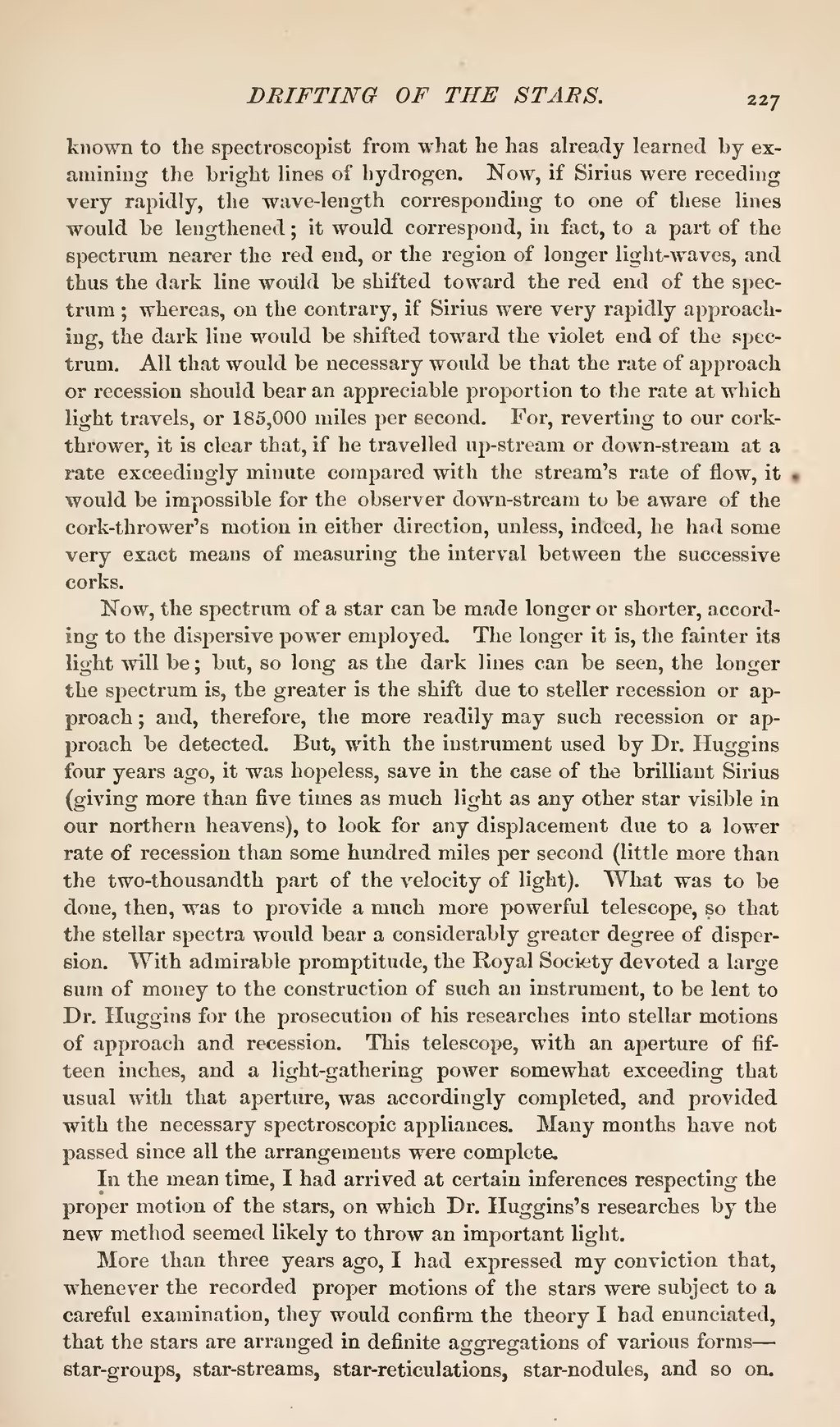known to the spectroscopist from what he has already learned by examining the bright lines of hydrogen. Now, if Sirius were receding very rapidly, the wave-length corresponding to one of these lines would be lengthened; it would correspond, in fact, to a part of the spectrum nearer the red end, or the region of longer light-waves, and thus the dark line would be shifted toward the red end of the spectrum; whereas, on the contrary, if Sirius were very rapidly approaching, the dark line would be shifted toward the violet end of the spectrum. All that would be necessary would be that the rate of approach or recession should bear an appreciable proportion to the rate at which light travels, or 185,000 miles per second. For, reverting to our cork-thrower, it is clear that, if he travelled up-stream or down-stream at a rate exceedingly minute compared with the stream's rate of flow, it would be impossible for the observer down-stream to be aware of the cork-thrower's motion in either direction, unless, indeed, he had some very exact means of measuring the interval between the successive corks.
Now, the spectrum of a star can be made longer or shorter, according to the dispersive power employed. The longer it is, the fainter its light will be; but, so long as the dark lines can be seen, the longer the spectrum is, the greater is the shift due to steller recession or approach; and, therefore, the more readily may such recession or approach be detected. But, with the instrument used by Dr. Huggins four years ago, it was hopeless, save in the case of the brilliant Sirius (giving more than five times as much light as any other star visible in our northern heavens), to look for any displacement due to a lower rate of recession than some hundred miles per second (little more than the two-thousandth part of the velocity of light). What was to be done, then, was to provide a much more powerful telescope, so that the stellar spectra would bear a considerably greater degree of dispersion. With admirable promptitude, the Royal Society devoted a large sum of money to the construction of such an instrument, to be lent to Dr. Huggins for the prosecution of his researches into stellar motions of approach and recession. This telescope, with an aperture of fifteen inches, and a light-gathering power somewhat exceeding that usual with that aperture, was accordingly completed, and provided with the necessary spectroscopic appliances. Many months have not passed since all the arrangements were complete.
In the mean time, I had arrived at certain inferences respecting the proper motion of the stars, on which Dr. Huggins's researches by the new method seemed likely to throw an important light.
More than three years ago, I had expressed my conviction that, whenever the recorded proper motions of the stars were subject to a careful examination, they would confirm the theory I had enunciated, that the stars are arranged in definite aggregations of various forms—star-groups, star-streams, star-reticulations, star-nodules, and so on.

